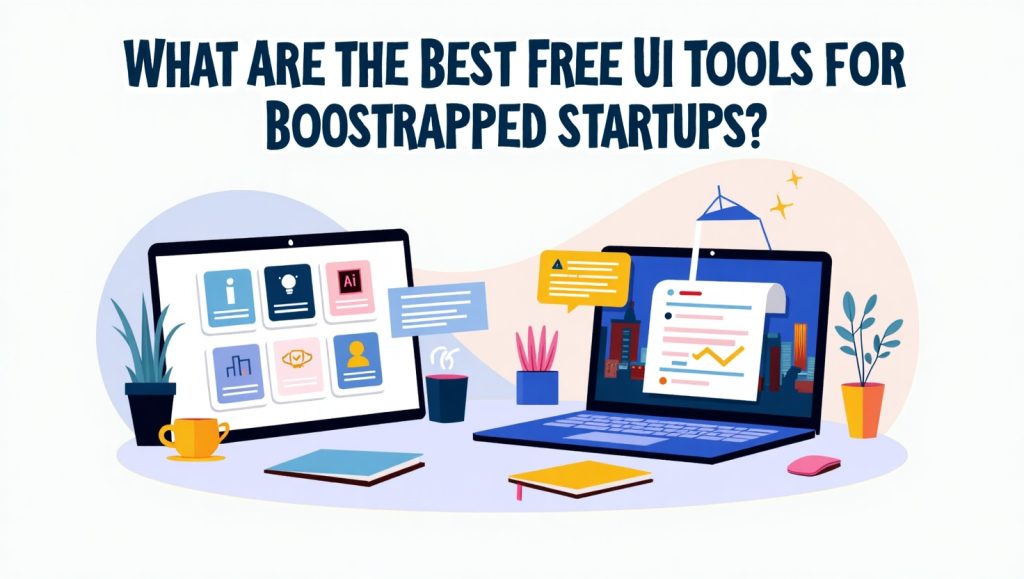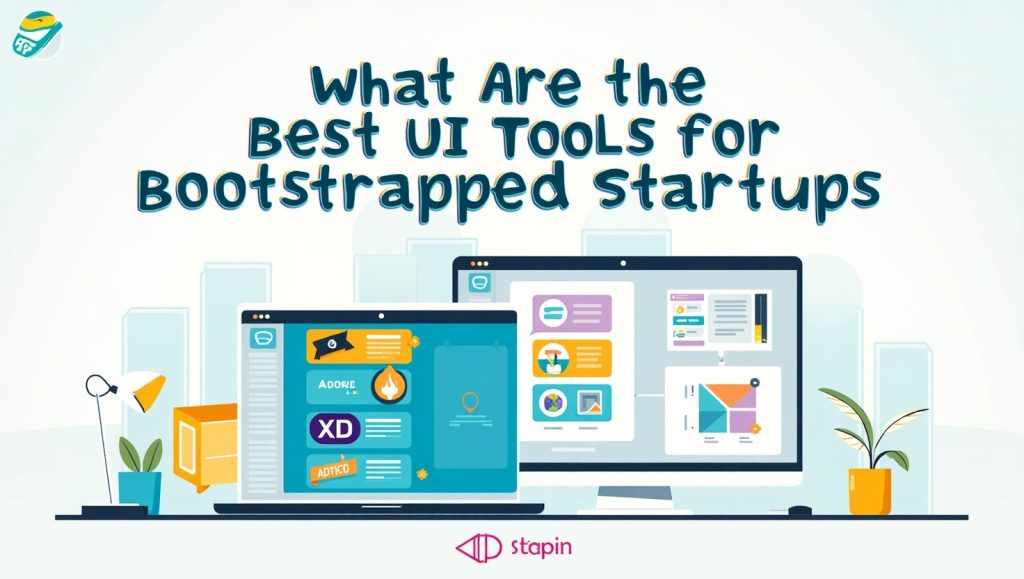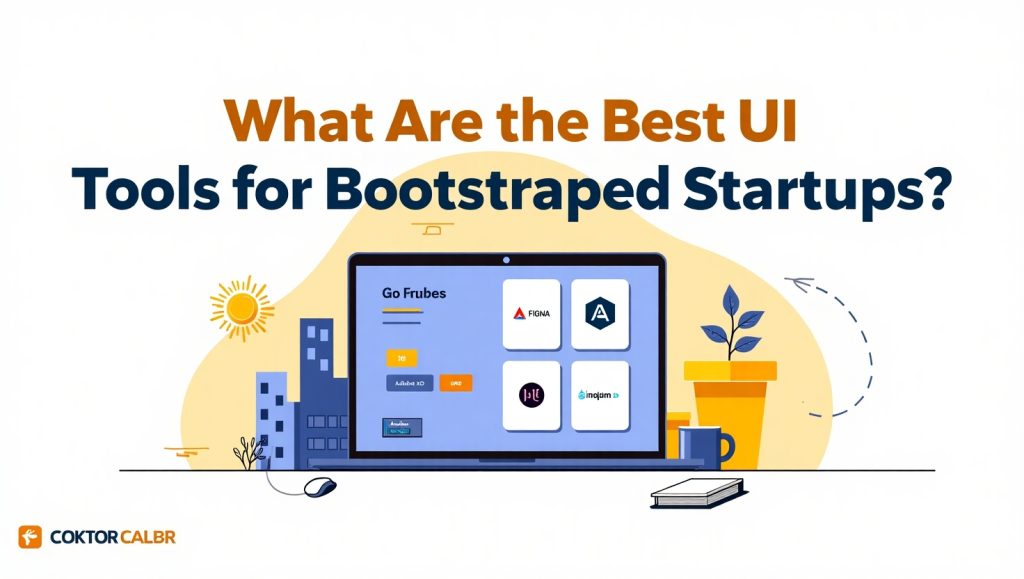For someone basically getting into business, and maybe even for a bootstrapped one, the greatest and if possible the cheapest tool becomes an underground weapon. UI design tools, especially when given the appropriate respect, create magic for the bootstrapped startup. Great design is more than the way it looks; it instills confidence, increases usability, and helps create the first impression for your startup. The cherry on top? Getting started on a budget is no longer a problem.
Here are some of the best free UI tools that are invaluable to those design-deprived startups that want to create stunning digital experiences within a tight budget. Whether you are developing a website, an app, or an internal dashboard, with the help of these tools, you will have the upper hand.
Figma – The Collaborative Design Powerhouse

It has very quickly become one of the favorite design tools in the UI/UX environment, probably because it is all so simple to understand. It is not so exact heavy software in download, just open the browser and get access to the famous co-designing.
Collaborating within the same file, allowing several team members to work on the same file-all wonderful for remote teams or growing design departments. The free plan offered by Figma is quite generous, that is, up to three Figma Files, along with an unlimited number of collaborators. It is great for startups curious in testing the waters and iterating quickly over MVPs. It’s quite easy to use so beginners will find the user interface simple and intuitive and some libraries filled with free UI kits, icons, and design templates.
Using Figma also gives you one more advantage because it integrates really well with applications like Slack, Notion, and even solutions regarding web design Cardiff. Features such as auto layout, creating prototypes, and version history help make Figma more of a design collaboration ecosystem than just a tool. You can even produce live prototypes for stakeholders without actually requiring them to download anything.
Why Figma is Perfect for Startups
Speed, agility, and communication – those are the three magic words that startups always whisper to one another. Figma provides all the answers to these three in a very convenient all-in-one product. With a collaborative interface, a team can also eliminate the back-and-forth email clutter that so slows down work. Designers, developers, and marketers can all work from one centralized file.
It also promotes design consistency. Reusable components and design systems can be built within, which is mostly ignored but the key ingredient to branding and scaling. Instead of reinventing the wheel every time, there is a central source of truth that grows with your company.
Another indeed underrated is the Figma community. Plugins have a whole world of resources contributed by fellow designers, like design inspiration, and the insight equips one to stay current with design trend help effects reduced development period.
Penpot – The Open-Source Alternative You’ll Love

Penpot provides a welcome alternative to paying for design tools for those startups that appreciate open-source solutions. Being web-based and designed for collaboration, Penpot empowers you to have absolute design process ownership. Technical-oriented startups with a healthy developer-designer relationship will find it particularly appealing.
An even more unique aspect of Penpot is the decoupling of any single platform. You may choose self-hosting or a cloud version. For any startup worried about privacy, controlled upgrades, or scaling opportunities, that flexibility is pure gold.
The interface looks like an ordinary UI tool like Sketch or Figma, so the learning curve is not steep at all, while vector editing, prototyping, and reusable components are all accessible under the free plan. Best suited for cross-functional teams working collaboratively on product design and development.
Penpot for Tech-Savvy Startups
While your team consists of developers familiar with hosting tools or working on web design projects Penarth with data-sensitive elements, the open-source nature of Penpot could be advantageous. You can customize it to meet your workflow and integrate it with your DevOps pipeline or product design system. For example, if you’re creating a medical platform that requires all design files to stay in-house for compliance, Penpot can accommodate that. With its simplicity, teams can build a design system that is really theirs, with no vendor lock-in.
The Penpot project keeps evolving due to input from the community. Start-ups that love to play around with things and believe in giving back will feel quite at home in this ecosystem.
Framer – Code Meets Design Magic
Framer checks all the boxes between design and development with a code-based design tool allowing interaction-heavy prototypes to be created without much coding ability. While the fully-fledged paid version is well-provided, the free tier of Framer is good enough for startups to test things and even launch basic pages.
Framer is especially useful in the design of landing pages or interactive prototypes that require a high-fidelity look and feel. The drag-and-drop interface with its pre-built templates gives non-designers a way to whip up something astonishing in just a few minutes.
I would say, one of its killer features is the ability to publish the site straight out from Framer. You can connect custom domains, track analytics, and iterate with speed-all for free. That is a huge advantage for lean startups needing to validate ideas fast.
Why Framer Appeals to Founders
Founders tend to lean towards tools that save on time and reduce technical debt. In other words, Framer gives you just the right amount of design freedom for real-world applications. You can apply actual logic in prototype modes, whether scroll animations or hover states. There will be no need for some developer to recreate it later: what you see is what users get.
And the templates and design assets in Framer will supply that final touch-even without a design team. As a solo founder or small team trying to maximize with little resources, Framer helps level the playing field.
From executing a website design Newport campaign to a well-polished app demo, Framer gives you the tools to take it from 0 to wow, without implementing heavy code logic.
MockFlow – Ideal for Wireframing and Planning

The brilliance of MockFlow lies in its value for early-stage planning. It acts as a sort of digital drawboard for web and mobile UI wireframes. User journeys may be mapped out, page structures sketched, and the vision of the product visually communicated with stakeholders.
The free version allows you to run one project with basic collaboration tools, which is usually more than enough for lean startup teams. It already has pre-built templates for dashboards, landing pages, mobile screens, and even flow diagrams.
The best part is that MockFlow is great for working beyond wireframes; you can also organize style guides, branding asset lists, and basic project management with it. In a nutshell, untrained professionals can have a fair engaging way to walk through the design discussions.
How MockFlow Helps Define Vision
At an early stage, clarity is more important than beauty in product development. MockFlow lets your team settle on a structure and user experience before anything else—colors, fonts, or details.
MockFlow is great if you want to involve founders, marketers, and developers in the process. It doesn’t matter if you have any artistic talent; just lay out your ideas. MockFlow helps you avoid very expensive pivots later by ensuring you clarify the structure and function before you invest time fine-tuning the visuals.
The tool works well with any other design and development workflows, particularly while brainstorming ideas destined for polishing in Figma or Framer. It is the sketchpad, before working on the actual painting.
Conclusion
The best free UI tool for your startup depends very much on what stage your product is at and what kind of team you have. If cloud access and collaboration are your primary concerns, Figma excels. If privacy and open-source freedom are your commandment, Penpot will deliver. Need to whip up interactive prototypes quickly? Framer is the choice.
Want to lay out your ideas in the very beginning? It is easy with MockFlow. Key take-home point? The budget does not have to be phenomenal in order to make something beautiful. A startup can utilize these tools to their high-end design features at no charge; by the time the startup begins to expand, a substantive design workflow would have already been put in place.